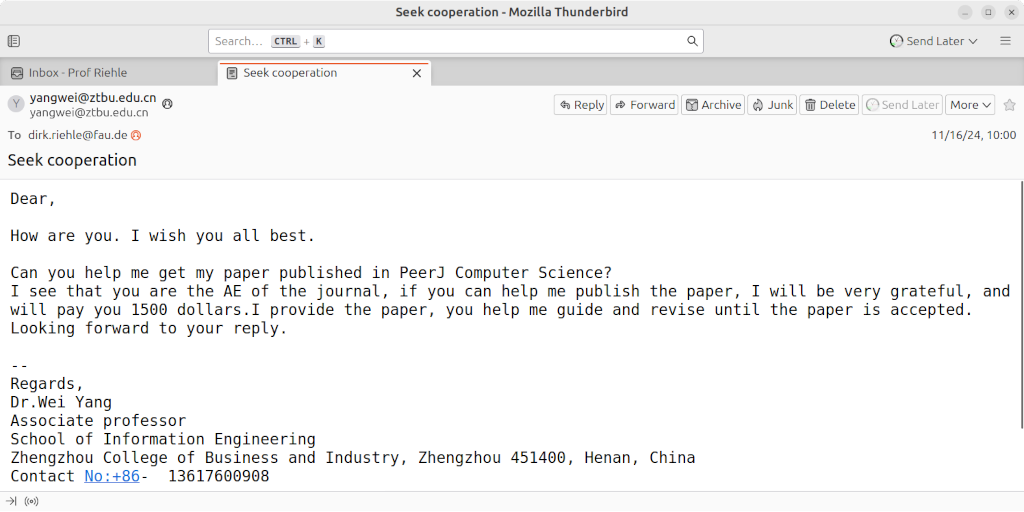Author: Dirk Riehle
-

Not a fan of the title “professor of empirical software engineering”
At TU Berlin, until recently, there was a “professor of parser construction” (official title). What was a hot topic 30 years ago, maybe, was not so hot thereafter. Today I see a fair bit of “professor of empirical software engineering” or “empirical software engineering research groups”. I wonder what everyone else in the department is…
-

Charging money for an ethics review?
Together with a psychologist, I’m currently performing a comparatively simple interview study about the effectiveness of a software engineering method. Proper procedure is paramount in psychology, so we submitted an ethics review request to my employer’s institutional (ethics) review board. I didn’t think we’d need the ethics approval, and lo and behold the ethics board…
-

No.
Unbelievable. Well, whoever sent this is at least smart enough not to provide their real name; at least I couldn’t figure out who that is.
-

Reviewing inappropriate submissions never was that easy
I got another random request to review a paper outside my domain of expertise. A quick search revealed that the publisher asking for the review is a predatory one, giving me no sympathy for the authors who did not do their homework when submitting to this publisher. You don’t just pay money to get your…
-

Using Google’s NotebookLM for summarization
Stefan Probst of Innovationsbeirat sent me a NotebookLM summary of my research methods course “Nailing Your Thesis” (NYT). The summary comes in the form of a 30 minute podcast with two hosts talking to each other, asking and answering questions, and making the content more palatable. To create the podcast, NotebookLM simple loaded my slides…
-

An unpopular open source grant proposal (in German)
This is the leading motivation for a grant proposal I just filed. Venture-capital funded open source is good for society? Oh no, how dare I. The proposal will probably be rejected for heresy. Kommerzielle Open-Source-Unternehmen sind Unternehmen, welche Produkte und Dienstleistungen auf Basis einer Software bereitstellen, die zu Teilen oder auch vollständig der Welt kostenfrei…



